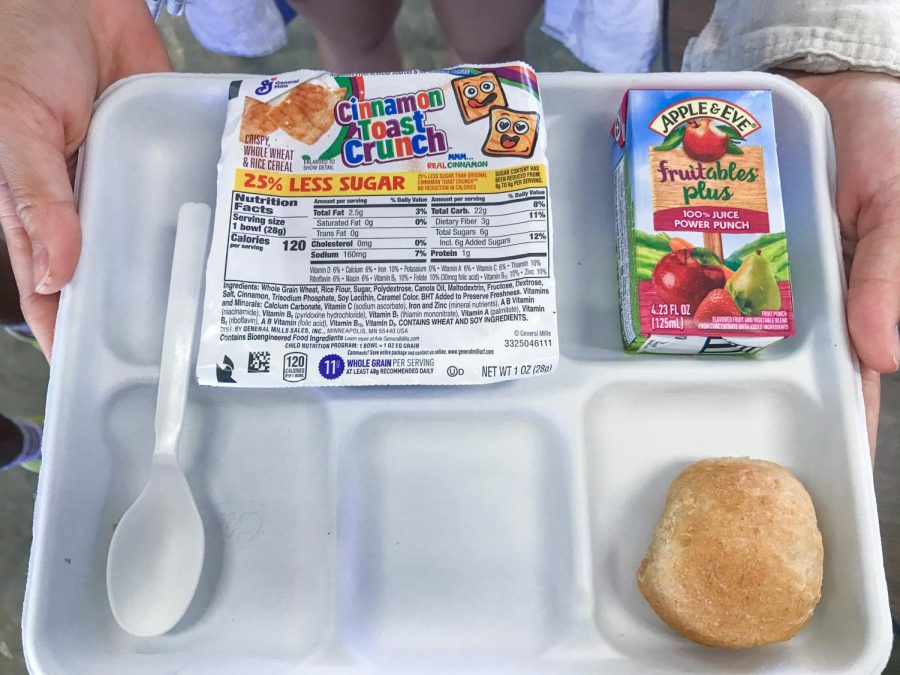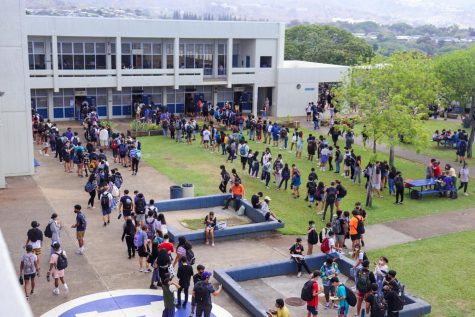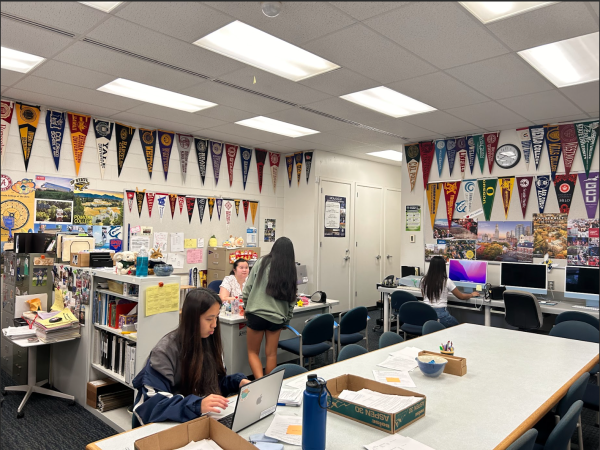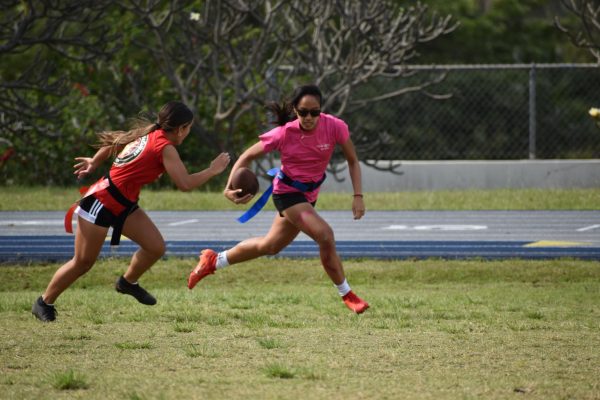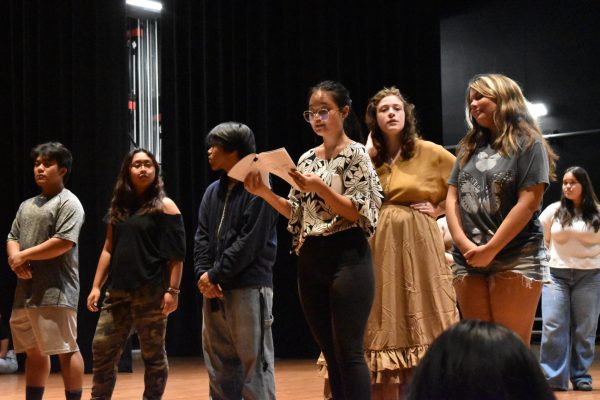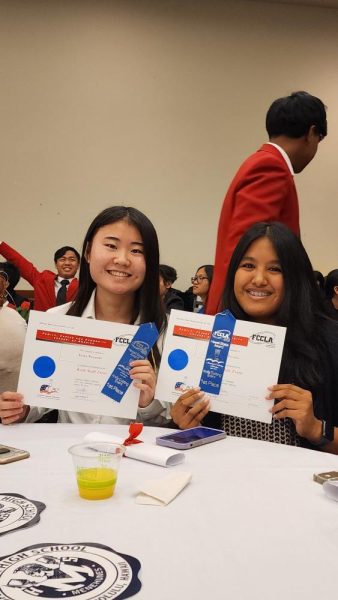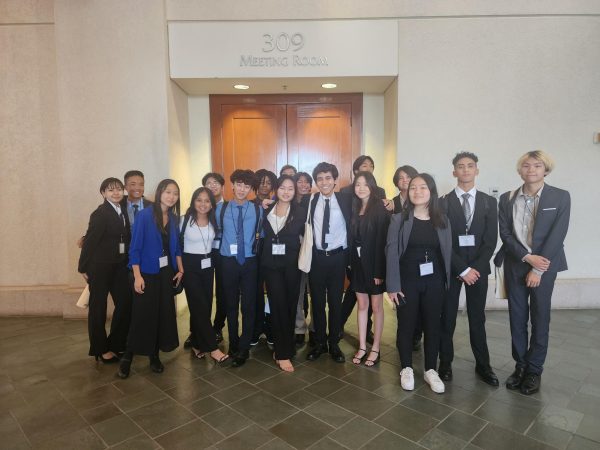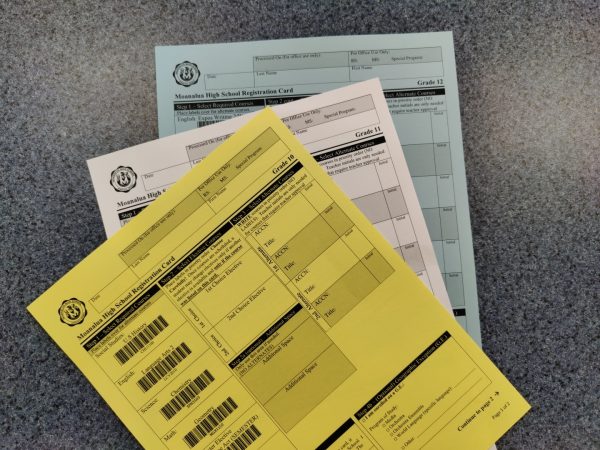Hungry Menes stuck with elementary portions
Portion sizes of Moanalua’s breakfast.
September 8, 2021
Students across all grade levels are devouring free school lunches; however, many students commented on the smaller portion sizes.
“We try to cut back because we cannot tell whether or not you are going to eat or not. It’s a guessing game,” Acting Cafeteria Manager Nicole Nishikawa said.
On August 18, only about 50 percent of the Lomi Tomato was consumed by students. The rest had to be discarded, Nishikawa said. Pre-packed side dishes like the Lomi Tomato are up to the student’s discretion whether or not they want to take it. While playing the “guessing” game when serving food, cafeteria staff are unsure about the amount students will eat and must reduce the serving sizes of side dishes to prevent food waste.
Sophomore Bronson Tafolo-Lin compares the serving sizes to those of an elementary lunch. “It is enough to make me less hungry,” he states.
Nishikawa confirmed that assessment and said cafeteria staff must follow strict state regulations regarding portion sizes that are universally used from kindergarten to twelfth grade. The regulation states that protein must not exceed two ounces among many other requirements. To visualize, Nishikawa compares the size of the proteins to the weight of two HI-Polymer erasers.
“Sometimes we give more than we’re supposed to,” said Nishikawa, “If we do give the right portion size, it is small.”
Senior Ku’ualoha Salas compares the lunches she got as a sophomore, commenting that there was “more stuff” referring to the additional sides and the snack bar that was once offered. Unfortunately, the cafeteria staff has no plans on reopening the snack bar.
Despite the smaller portions, students are grateful for the free meals as it alleviates some financial stress for some families.

